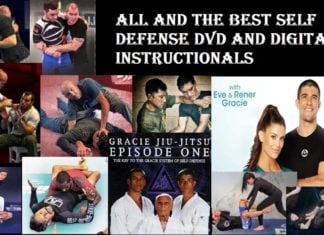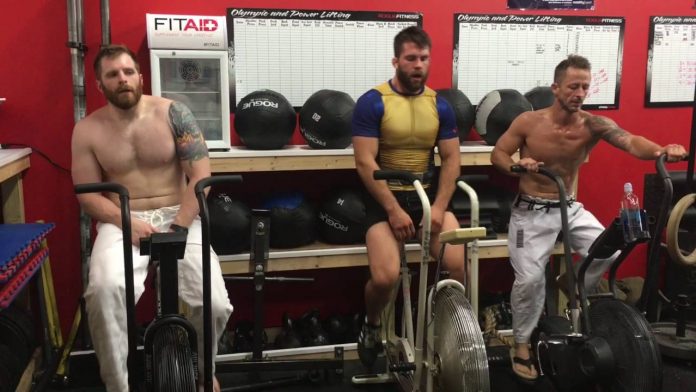
The new-age question every athlete faces is how to gain an advantage, any advantage, to be more competitive in your sport? There has been a crazy amount of research going into improving athletes for specific sports. However, it has not included grappling or fighting arts as much as other sports. Of course, football, basketball, soccer, and the likes are much more interesting given the revenue they create. That said, most people training BJJ are not professionals anyway, so there’s no need really to train as the UFC fighters do. Instead, you should just pick something that will help you achieve your BJJ fitness goals. Plain and simple.
BJJ fitness is easy – be able to roll without fatigue becoming too much of a factor on how you perform. In all honesty, it is not that hard to figure out. The issues emerge when people try to emulate professional fighters, or other athletes, who have individually tailored programs and a bunch of folks measuring things. Forget about it. Even if you’re a professional grappler, it’s not really conceivable. What you can do is pick a discipline, or two, that will align with your BJJ fitness goals and will help you develop the athletic qualities you need for Bette performance on the mats.
What Is BJJ Fitness?
BJJ fitness as a term is not something we see often. It is my opinion, though, that it fits perfectly and we should use it more. Why? Well, all that strength and conditioning mumbo jumbo sounds really fancy but mostly confuses people more than it helps them. After all, we live in the age of information. There’s a term in psychology called the paradox of choice. According to it, the more choices people have, the more they stress instead of being happy about it. And today, there are more training modalities and routines one can count, let alone hope to learn in a lifetime.
The goal of anyone training grappling is to grapple. Here’s the first truth about BJJ fitness – nothing will help you unless you roll and train often. Remember the first few times you rolled? You gassed out in seconds with a higher belt, regardless of your fitness background or current shape. I’ve seen folks that are in Spartan race shape, and yet, they can’t get through a 5-minute roll with a tiny purple belt. The first rule of BJJ fitness is to do BJJ, and by that, I mean roll as much as you can for as many days a week as possible.
On a more specific note, BJ Fitness s all about you being able to roll without getting tired. As easy as that sounds there’s a lot going on behind the scenes. There are different energy systems that kick in at different times, different muscle fiber requirements, flexibility requirements, and some unique dexterity needed in order to make a grappler perform to the best of their athletic abilities. For the everyday person, this is too much to consider. Instead, they usually turn to one of the popular fitness options looking to get in better shape. And that is perfect, as long as you pick the right one for your specific needs and goals.
What Are Your Options?
First and foremost no two people are the same. Secondly, no two rolls or matches in Jiu-Jitsu are going to be the same. That means that unlike a track and field athlete, for example, who has to only prepare for one type of exertion, you can’t know how a roll is going to unfold. That means that it is not about becoming stronger in certain areas of BJJ fitness, but rather removing any weaknesses you might have. Well, at first anyway. Later on, you can focus more on developing certain strengths.
Before I go into the types o fitness activities you can do to improve your BJJ, I’ll just say that all that functional fitness stuff where you hang from a pull-up bar holding your Gi while try to mimic spider guard on resistance bands won’t do you any good. Just like in BJJ, stick to the basics – proven methods of fitness that develop specific athletic abilities.
Yoga
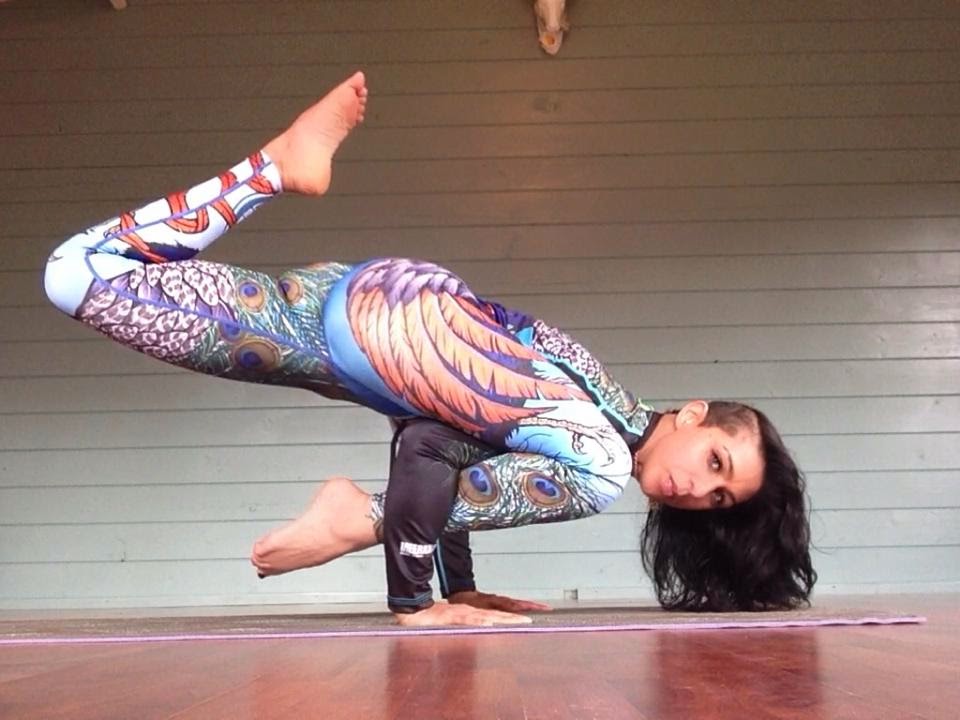
Good for: Breathing control, dexterity, practical flexibility, and body awareness. Breathing under stress has to be the most important lesson a grappling beginner can learn from doing Yoga.
Drawbacks: No external resistance means you can’t develop strength in a way that you could with other means of fitness.
Weightlifting
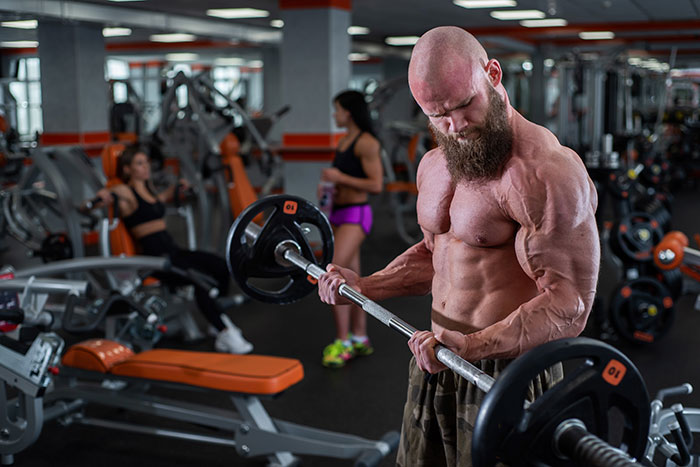
In terms of what weightlifting brings to the table, the answer is easy – strength and power. Depending on what is your weakness, and what quality you need to train, you can quickly turn into a BJJ Hulk if train right.
Good for: Developing strength and explosiveness. In the odd case, you need to put on muscle as well, nothing beats weightlifting workouts.
Drawbacks: Hardly any cardio component, so be sure to have a decent gas tank before addressing strength. Also, it takes a lot of time to recover properly from lifting heavy weights, which is hard to achieve when you’re grappling several times a week.
Gymnastics
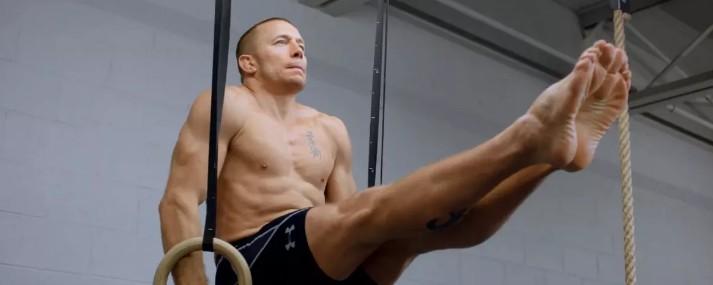
Good for: Extreme body control and awareness in mechanically inferior positions. Simultaneously develops strength, explosiveness, cardio, flexibility, mobility and any and all athletic qualities a grappler might need.
Drawbacks: It takes a long time to learn the basics, and start developing connective tissue which is much more useful than muscle tissue. By long time, I mean 2-3 years until you start noticing real improvements in technique and performance.
Swimming
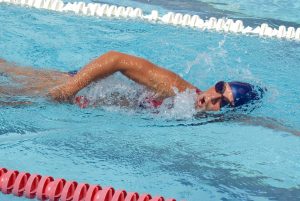
Good for: Training in water means you give your body a rest from gravity. Swimming is great for the joints and tendons, and it develops killer cardio that is second to none.
Drawbacks: As easy as it is on your joints, swimming can be hard and does require a lot of time to recover, particularly if you’re not used to it. Moreover, similarly to gymnastics, you need to learn massive amounts of technique if you really want to get the most out of it.
MMA/Striking

Good for: Developing hand-eye coordination and fighting rhythm. These area qualities no there means of fitness can help you develop. Moreover, you get to work on “fighting fitness”, or in other words, a gas tank specific for fighting needs.
Drawbacks: A lot of impact. It doesn’t matter whether you’re striking a bag or doing sparring, you’re going to place lots of additional stress on your joints. Not to mention the potential for injury.
In Summary
Of course, there are not the only options for developing and improving your BJJ fitness. They are, however, really accessible all around the world, and everyone can sing up for each and every one of them. Plus, as you get better at certain qualities you can switch, or even try to figure out hybrid training by using multiple fitness options. As long as you focus on removing weaknesses first, and do not overwork yourself, you’ll see big improvement n how long and how hard you can roll.

















